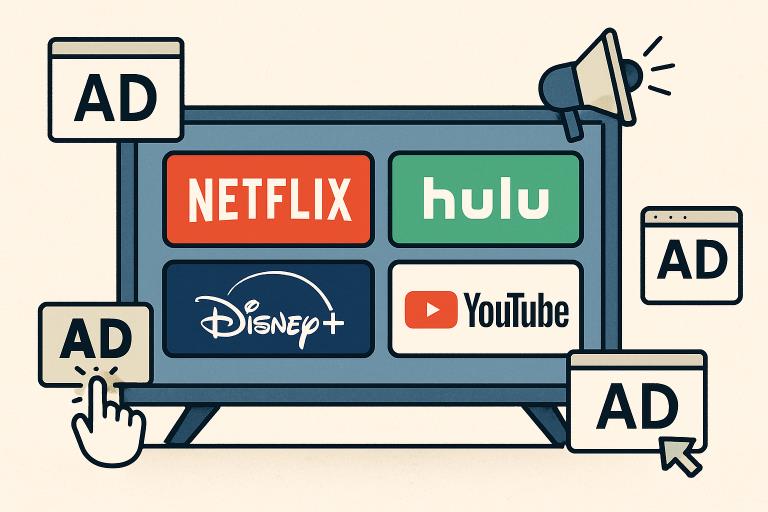Now Reading: How Streaming TV Is Reshaping Modern Advertising
-
01
How Streaming TV Is Reshaping Modern Advertising
How Streaming TV Is Reshaping Modern Advertising

Streaming television is no longer a fringe phenomenon—it’s at the core of how audiences interact with content today. With this rise in popularity, the advertising industry is transforming, leveraging emerging technologies and new business models to reach viewers more efficiently. Marketers and brands are rapidly shifting their spend towards Streaming TV ads, where targeting, measurement, and creativity can reach new heights compared to traditional TV. As platforms diversify and audiences become more selective, understanding the force behind streaming TV’s influence is essential for every advertiser navigating the evolving digital landscape.
The streaming boom isn’t just changing where and how viewers watch; it’s forcing advertisers to rethink campaigns, data strategies, and creative messaging. The ability to deliver high-impact, measurable campaigns to more tailored audiences is redefining success and opening up innovative opportunities for brands of all sizes. This article explores the rising dominance of streaming services, the evolution of advertising strategies, and what the future holds for advertisers in this rapidly changing environment.
The Rise of Streaming TV
Streaming TV has overtaken traditional cable and broadcast networks as the top choice for viewers, with a significant milestone reached in May 2025: streaming services accounted for a remarkable 44.8% of all television consumption. According to Forbes, this shift reflects how today’s consumers are redefining media engagement by favoring convenience, personalization, and on-demand access over rigid programming schedules.
This dramatic evolution stems from both new content choices and the flexibility to watch anytime, anywhere. Digital-first viewing trends began accelerating during the pandemic and have only intensified, compelling advertisers to follow consumers onto their preferred platforms. As a result, the growing importance of streaming in modern households is reshaping both consumer behavior and the future of the advertising ecosystem.
Shift in Advertising Strategies
With fewer people watching linear TV, advertisers are redirecting their budgets toward streaming platforms that offer dynamic reach and robust data insights. Companies like Roku and FreeWheel have partnered to optimize premium connected TV inventory in real-time, ensuring brands can achieve the transparency and control needed for effective campaigns. By integrating programmatic buying and technology-driven delivery, marketers can now execute cross-platform campaigns and analyze detailed performance metrics, which were previously unattainable in the traditional TV landscape.
Successful streaming campaigns require a fresh approach—incorporating audience-first data, agile creative, and attribution models that measure outcomes across channels and devices. As advertisers lean into these capabilities, streaming TV’s value proposition as a performance-driven, measurable ad channel becomes even more apparent.
Addressable TV Advertising
A key advantage of streaming TV is addressability: the ability to reach specific households or audience segments with personalized ad content. Addressable TV advertising moves beyond the “one-size-fits-all” approach of traditional broadcast and engages audiences with tailored messaging that aligns with their interests, viewing habits, and demographics.
Personalization Delivers Results
Industry research highlights the power of targeting: by shifting just 10% of an ad spend to addressable TV, campaigns can boost reach—especially among viewers who have reduced or stopped watching conventional TV. For advertisers looking to maximize return on investment, these advances translate into higher engagement and more efficient use of marketing budgets.
Local Advertising Opportunities
Streaming TV is democratizing access to television advertising, bringing new opportunities for small and local businesses. As viewers turn to streaming for everything from national news to niche sports, local advertisers can now access inventory once reserved for big brands. According to Investopedia, the television advertising industry has evolved from broad, expensive national campaigns to more targeted and data-driven approaches, opening the door for smaller players to participate effectively. By utilizing geo-targeting and audience segmentation, businesses can deliver hyper-local messages with high impact, empowering them to compete in a previously inaccessible channel. This shift is significant: local streaming TV buys enable businesses to optimize media spending, track outcomes in real time, and connect with the communities that matter most.
Challenges in Streaming Advertising
Despite rapid innovation, streaming TV advertising faces notable challenges. The fragmented landscape means no single platform dominates, so brands must navigate a patchwork of services, ad formats, and walled gardens. Audiences have little patience for irrelevant or repetitive ads, leading to increased ad blocker use and churn if the viewing experience deteriorates.
Measurement also lacks standardization, making it difficult for advertisers to compare results across platforms or integrate streaming data with traditional metrics. Privacy concerns, shifting regulations, and an evolving ecosystem demand agile, privacy-conscious marketing approaches. Advertisers must balance the pursuit of personalized experiences with transparency and respect for consumer privacy or risk losing trust and market share.
Future of Streaming TV Advertising
The next evolution in streaming TV advertising will be defined by deeper personalization and interactive experiences. Technologies such as AI-driven creative optimization, dynamic ad insertion, and shoppable TV formats are poised to empower advertisers and delight audiences. Shoppable ads—offering viewers the chance to purchase products directly from their TV screen—showcase the power to blur the line between inspiration and transaction.
As platforms invest in innovation and viewers grow more comfortable engaging with ads that enhance rather than interrupt, brands will find new ways to drive action, loyalty, and long-term value. The fusion of data, creativity, and technology promises a future in which streaming TV is not just an alternative to linear, but the centerpiece of modern advertising strategies.
In summary, streaming TV is revolutionizing how advertisers reach audiences, connect with communities, and measure success. With the rise of addressable and interactive solutions, brands can meet viewers where they are—ushering in a new era of impactful, relevant, and measurable advertising.





















